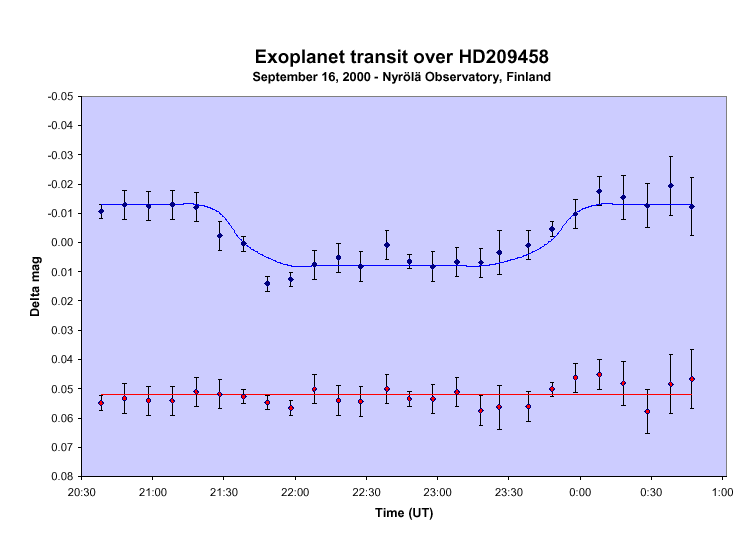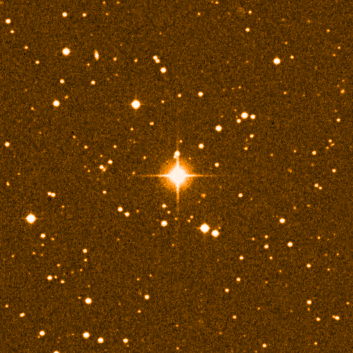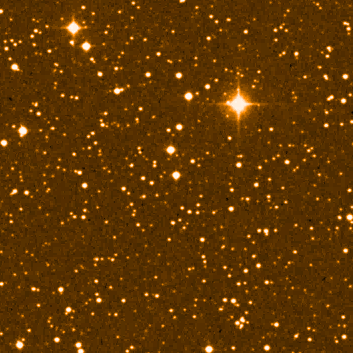 Click to enlarge
Click to enlarge
Brief
Overview
HD 209458 lightcurve
Target Fields
Papers
The first exoplanet was found in 1995 by Michel Mayor from the Geneva Observatory. The planet is a Jupiter size planet in a very tight orbit around the star 51 Peg. The short period was quite a surprise since planets were not expected to survive in orbits that close to a star. Later even close planets have been detected with periods between 1 and 2 days. When the orbital period is just a few days the chance of an occultation is around 10 percent, so several groups starting to look for small drops in the lightcurve of the parent stars. True enough, one of the exoplanet stars showed evidence of a planet transiting the stellar disk. Now, due to large efforts by several teams, quite a number of systems have been found (The count now stands at 52, Sep. 15, 2008). The transits are only observable occasionally and it is necessary first to figure out, whether the targets are observable during the allocated observing time , and next to check, whether an eclipse takes place during the one or more of the nights. If none of the two examples given below are observable in a given period, try to consult the Exoplanet Encyclopedia. Here you can find many transiting planets. Actually the count is so high now, that there is a fair chance to find a transiting system on any night.
A very productive project among the search programmes for transiting planets is SuperWASP, which is also a good source for targets. The list includes (10.11.2008) 15 targets.
A major part of the preparations is actually to calculate times of transits and compare with the allocated observing nights to see if a transit do occur. Due to the large number of systems this needs to be done in a systematic way. You may search for tables of transits that some people produce from time to time.
The basic parameters for HD 209458 are:
Ra(J2000) = 22 03 10.8
Dec(J2000) = 18 53 04
V = 7.65
B-V =
The basic parameters for TrES-1 are:
Ra(J2000) = 19 04 09.8
Dec(J2000) = 36 37 57
V = 11.79
B-V =
This is a recently discovered system reported by Bouchy et al. 2005. It
has a deeper eclipse than the two other systems of appr. 3%. Mid
transit is T=2 453 629.389 +- 0.0005 and the period is P=2.219+-0.0005
days. The star is a high proper-motion star with spectral class G5.
Basic parameters are:
RA(J2000) = 20 00 43.7
Dec(J2000) = 22 42 39.1
V = 7.5
B-V = 1.0
The lightcurve from the Exoplanet Encyclopedia.
Back to TOP of PAGE
 Click to enlarge
Click to enlarge
 Click to enlarge
Click to enlarge
Alonso et al. 2004, ApJL 613, L153 (pdf file 1.5M)
Discovery paper for TrES-1
Charbonneaud et al. 1999, ApJ, 529, 45 (pdf
file 3.5M) HD 209458 planet.
Bouchy et al. 2005, Astro-ph/0510119
Back to TOP of PAGE